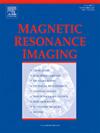MRASM:用于乳腺肿瘤预测的多尺度剩余注意时空模型
IF 2
4区 医学
Q2 RADIOLOGY, NUCLEAR MEDICINE & MEDICAL IMAGING
引用次数: 0
摘要
动态对比增强磁共振成像(DCE-MRI)的空间特征和时间特征对肿瘤信息的预测都很有用。然而,深度时空特征是否能提高模型的诊断性能尚不清楚。目的有效整合DCE-MRI的深部时空特征,提高对乳腺良恶性肿瘤的预测能力。方法建立基于ResNet (2 + 1)D的多尺度剩余注意时空模型(MRASM),用于乳腺良恶性肿瘤的预测。与ResNet (2 + 1)D相比,MRASM在多尺度、关注和残差模块方面有三个改进。使用受试者工作特征(ROC)曲线下面积(AUC)和准确度来评估模型的性能。采用DeLong检验对MRASM与传统方法进行统计学比较。结果MRASM方法的AUC为0.9962,准确度为0.9660,优于原始的ResNet (2 + 1)D方法(AUC = 0.9182,准确度= 0.8340)和传统的3D CNN方法(最佳AUC = 0.8752,准确度= 0.8128)。结论MRASM方法是一种准确预测乳腺良恶性肿瘤的有效方法。本文章由计算机程序翻译,如有差异,请以英文原文为准。

MRASM: A multiscale residual attention spatiotemporal model for breast tumor prediction
Background
Spatial features and temporal features derived from dynamic contrast-enhanced magnetic resonance imaging (DCE-MRI) are both useful for the prediction of tumor information. However, it remains unclear whether deep spatiotemporal features can improve the diagnostic performance of the model.
Purpose
To improve the prediction performance of benign and malignant breast tumors by efficiently integrating deep spatial and temporal features from DCE-MRI.
Method
A multiscale residual attention spatiotemporal model (MRASM) based on ResNet (2 + 1)D was proposed for the prediction of benign and malignant breast tumors. Compared to ResNet (2 + 1)D, the MRASM has three improvements, including multiscale, attention, and residual modules. Model performance was evaluated using the area under the receiver operating characteristic (ROC) curve (AUC) and accuracy. Statistical comparisons between the MRASM and traditional methods were performed using the DeLong test.
Results
The MRASM method obtained a higher AUC of 0.9962 and accuracy of 0.9660 compared to original ResNet (2 + 1)D method (AUC = 0.9182 and accuracy = 0.8340) and traditional 3D CNN methods (best AUC = 0.8752 and accuracy = 0.8128).
Conclusion
The proposed MRASM method is an efficient approach for the accurate prediction of benign and malignant breast tumors.
求助全文
通过发布文献求助,成功后即可免费获取论文全文。
去求助
来源期刊

Magnetic resonance imaging
医学-核医学
CiteScore
4.70
自引率
4.00%
发文量
194
审稿时长
83 days
期刊介绍:
Magnetic Resonance Imaging (MRI) is the first international multidisciplinary journal encompassing physical, life, and clinical science investigations as they relate to the development and use of magnetic resonance imaging. MRI is dedicated to both basic research, technological innovation and applications, providing a single forum for communication among radiologists, physicists, chemists, biochemists, biologists, engineers, internists, pathologists, physiologists, computer scientists, and mathematicians.
 求助内容:
求助内容: 应助结果提醒方式:
应助结果提醒方式:


